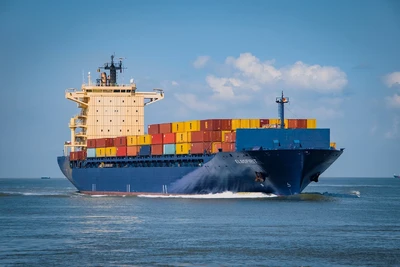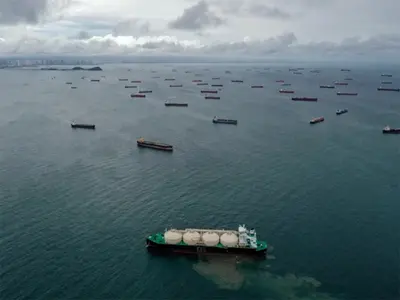
When importing from China, your total landed cost depends heavily on three key variables: tariffs, duties, and taxes. Whether you’re managing regular container loads or specialized freight into regulated markets like the US, UK, EU, or Australia, understanding these charges is essential for budgeting, pricing, and customs compliance.
In this article, we’ll walk you through the mechanics of these fees, highlight key country-specific insights, and share practical tips to help your business reduce risks and stay compliant.
Tariffs are government-imposed taxes on imported goods, usually as a tool for protecting domestic industries or managing trade balances. In many markets, these are product-specific and country-of-origin specific. For example, the U.S. applies Section 301 tariffs on a wide range of Chinese-origin goods.
Duties are calculated based on your product’s HS (Harmonized System) code and the customs-assessed value (most often CIF: Cost + Insurance + Freight). Each product type has its own duty rate, and in many countries, duties are ad valorem (percentage-based).
These include:
Value-Added Tax (VAT) – common in the UK, EU, and China
Goods and Services Tax (GST) – used in countries like Australia, New Zealand, and Canada
Excise Duties – applicable to tobacco, alcohol, and luxury items
Anti-dumping Duties – applicable when a country finds imports are being sold below fair market value
Every product must be classified under the appropriate Harmonized System code. This determines duty rates, import restrictions, and required documentation. Misclassification can result in underpayment penalties or shipment delays.
Tools:
HTSUS (U.S. Schedule)
EU TARIC
Most countries use one of the following pricing bases:
FOB (Free on Board) – price at port of departure
CIF (Cost, Insurance, and Freight) – includes international shipping and insurance costs
DDP (Delivered Duty Paid) – price including all duties and delivery
Multiply the customs value by the applicable duty rate. For example:
If a product has a CIF value of $10,000 and a duty rate of 8%, the duty is:
$10,000 × 8% = $800
Now add taxes on top of the duty-inclusive value. Example (UK VAT @ 20%):
($10,000 + $800) × 20% = $2,160 VAT
Duties: Vary from 0% to over 25%, depending on product and Section 301 lists.
Taxes: No national VAT; state sales tax applies after import.
Key Tip: Use a licensed customs broker for product classification and compliance.
Duties: Based on UK Global Tariff (post-Brexit version of EU CET)
Taxes: 20% VAT on most goods; paid upon import unless using a deferment account
Key Tip: Use Postponed VAT Accounting (PVA) to improve cash flow.
Duties: Apply to non-EU imports; typically 0–12% for industrial goods
Taxes: VAT ranges by country (17–27%)
Key Tip: Declare the correct “Customs Procedure Code (CPC)” for warehouse imports or temporary storage.
Duties: 5% for most goods unless under a Free Trade Agreement
Taxes: 10% GST applies on CIF + duty value
Key Tip: Use FTAs like ChAFTA to reduce or eliminate duties on many Chinese goods.
Trying to reduce duties by undervaluing the shipment is illegal and a red flag for customs audits. Authorities may seize goods or impose heavy fines.
When using EXW, all responsibility falls on the buyer—including inland transport, export clearance, and insurance. Many importers mistakenly assume suppliers will manage customs under EXW.
Use FOB or FCA when working with Chinese suppliers to split responsibility clearly and avoid surprise charges.
Even a small mistake on the commercial invoice, packing list, or Bill of Lading can result in clearance delays. Always ensure:
HS codes are included
Incoterms are clearly stated
Units, quantity, and value match across documents
If sourcing from multiple suppliers, consolidating into one LCL or FCL shipment minimizes the number of customs entries and administrative charges.
Delivered Duty Paid (DDP) shipping allows importers to receive goods with all costs prepaid, including duties and taxes—simplifying compliance for eCommerce and smaller buyers.
Certain U.S. products can apply for Section 301 exclusion. EU and UK regimes sometimes offer temporary suspension of duties under specific customs relief schemes.
Store goods duty-unpaid until they are sold or re-exported. Useful for large-volume traders and international distributors.
Classify Products Correctly
Avoid shortcuts. Always consult a licensed broker or trade compliance team when classifying a new SKU.
Maintain a Centralized Documentation Process
Use digital document platforms and consistent naming conventions to minimize errors.
Build Relationships with Customs Authorities
Apply for Authorized Economic Operator (AEO) status in the EU or Customs-Trade Partnership Against Terrorism (C-TPAT) in the U.S. for faster clearances.
Partner with a Logistics Provider that Knows Your Market
A forwarder with knowledge of both Chinese export procedures and destination country customs can anticipate and resolve delays proactively.
Understanding tariffs, duties, and taxes isn’t just about compliance—it’s about controlling costs, reducing risk, and ensuring reliable delivery timelines. For companies importing from China, these charges can account for 20–35% of the landed cost, depending on the product category and destination market.
At CUC Freight, we work with businesses worldwide to streamline customs procedures, accurately calculate import charges, and integrate compliance into their supply chains. Whether you're shipping a single container or coordinating high-frequency imports, our team ensures every step is optimized and compliant.
Need support with customs classification, DDP pricing, or bonded warehousing? Contact CUC Freight for a tailored solution.
 Shipping Cargoes By Ocean, Air, Or Multimodal Transport?June 27, 2023In today's globalized world, shipping cargoes across international borders has become essential for businesses of all sizes, and it requires a reliable and cost-effective transportation solution. ...view
Shipping Cargoes By Ocean, Air, Or Multimodal Transport?June 27, 2023In today's globalized world, shipping cargoes across international borders has become essential for businesses of all sizes, and it requires a reliable and cost-effective transportation solution. ...view Navigating Global Trade: How to Choose the Right International Courier Service ProviderSeptember 26, 2023In the age of globalization, businesses of all sizes have access to international markets, and global trade is more accessible than ever before. To succeed in this dynamic landscape, choosing the righ...view
Navigating Global Trade: How to Choose the Right International Courier Service ProviderSeptember 26, 2023In the age of globalization, businesses of all sizes have access to international markets, and global trade is more accessible than ever before. To succeed in this dynamic landscape, choosing the righ...view How a Misprinted Invoice Made Me Rethink China-UK Shipping (And Saved My Business £27k)April 7, 2025Bristol importer spills the tea on cutting logistics chaos - from customs meltdowns to courier cons. CUCFreight's unorthodox hacks inside.view
How a Misprinted Invoice Made Me Rethink China-UK Shipping (And Saved My Business £27k)April 7, 2025Bristol importer spills the tea on cutting logistics chaos - from customs meltdowns to courier cons. CUCFreight's unorthodox hacks inside.view Drought-Hit Panama Canal to Restrict Access for One Year?August 31, 2023Ilya Espino, deputy director of the Panama Canal Authority, said that if the area where the canal body of water is located does not receive enough rain in the next few months, the ship restrictions on...view
Drought-Hit Panama Canal to Restrict Access for One Year?August 31, 2023Ilya Espino, deputy director of the Panama Canal Authority, said that if the area where the canal body of water is located does not receive enough rain in the next few months, the ship restrictions on...view